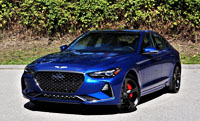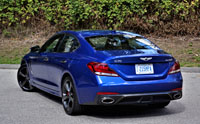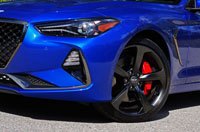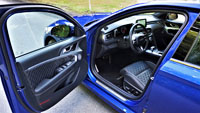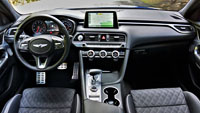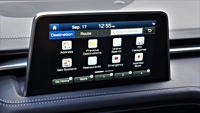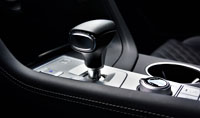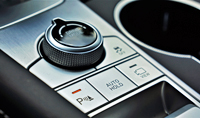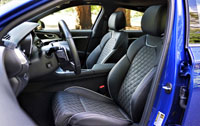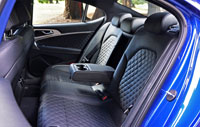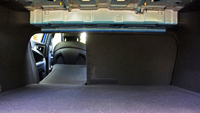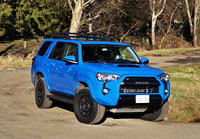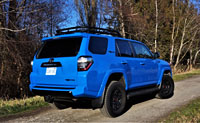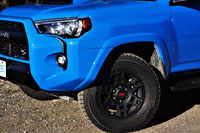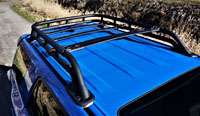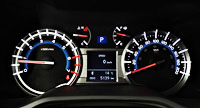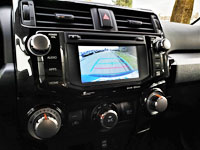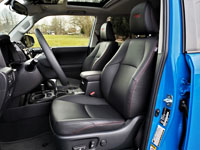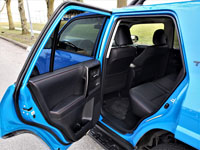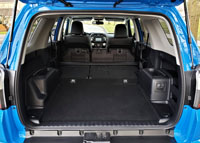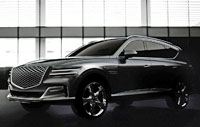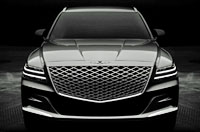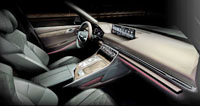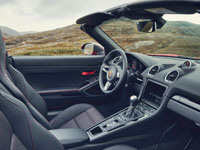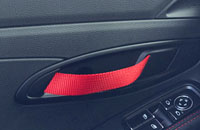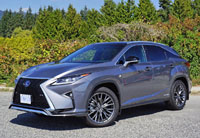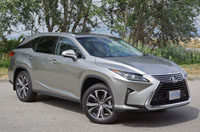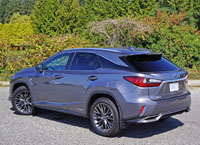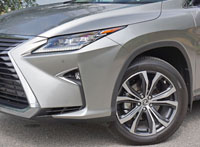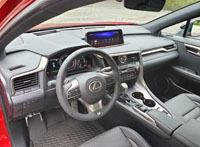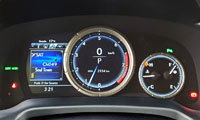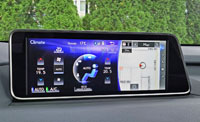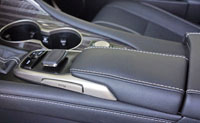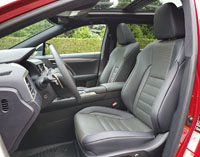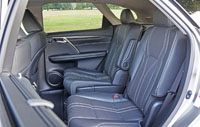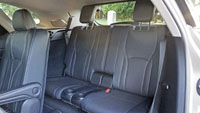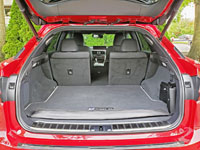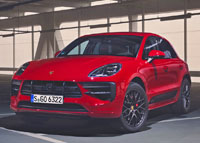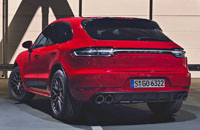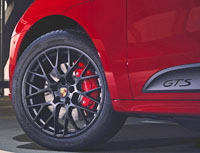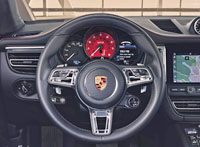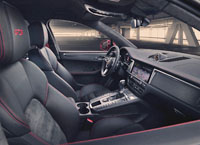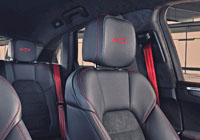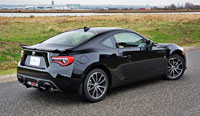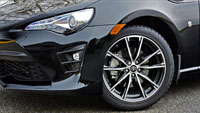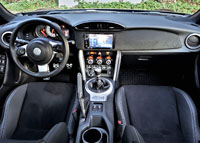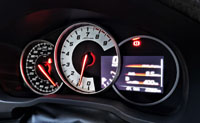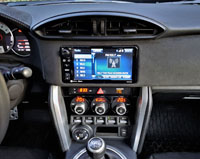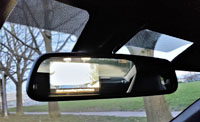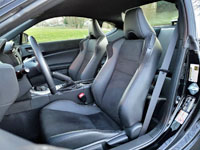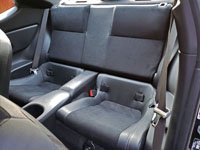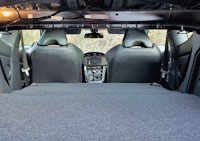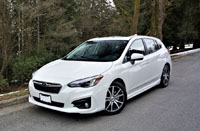
Canada’s compact car class is amazingly competitive, but due to regularly enhancing its exterior design, massive improvements in cabin refinement, major gains made to its infotainment systems, and never-ending faith in its unique horizontally-opposed powertrain that connects through to standard all-wheel drive, Subaru has kept its Impreza wholly relevant at a time when competitors are cancelling their small cars.
News of discontinued models never goes over well with auto enthusiasts, even if the car in question is a rather mundane econobox. After all, the same marketplace sentiment that caused General Motors to axe the Chevrolet Cruze and its Volt EV counterpart is also responsible for the elimination of the Ford Focus along with its two sportiest trim lines, not to mention the once fun-to-drive Alfa Romeo-based Dodge Dart a few of years back. And these four are merely in the compact class; with many others falling by the wayside in the subcompact and full-size passenger car segments as well, all making way for new crossover SUVs and electric vehicles.
Subaru produces a full sleight of crossovers, its best-selling model being the Crosstrek that’s based on the Impreza 5-Door in this review. I happen to like that innovative little CUV very much, but I’m also a fan of compact wagons, which is pretty well what the Impreza 5-Door is.
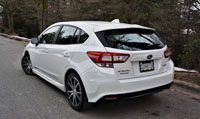
We can call it a hatchback or maybe a liftback to make it seem sportier, but in reality the Impreza 5-Door is a compact wagon. Without doubt someone in Subaru Canada’s marketing division would rather I didn’t call it that, but they should also be aware enough to know this Japanese brand has a faithful following of wagon lovers. The Outback is little more than a lifted Legacy Wagon after all, the five-door Legacy unfortunately no longer available in our market.
The Impreza’s styling was improved with its most recent redesign in 2016, and it truly looks more upscale, even in its less expensive trim lines. This Sport model get fog lights and LED-enhanced headlamps even though it’s merely a mid-range trim, not to mention extended side sills, a discreet rear rooftop spoiler, and stylish LED tail lamps, while machine-finish double-Y-spoke 17-inch alloy wheels with black-painted pockets underpin the sophisticated look.
Subaru produces the Impreza in two body styles, the second being a 4-Door sedan, but this 5-Door is the more popular option in the Canadian market. Both look good and serve their purpose well, and by that I don’t just mean the satisfaction of personal tastes, as the four-door provides the security of being able to lock valuables away in a trunk, and the five-door has more room for loading cargo. The sedan’s trunk can only carry 348 litres of gear, which while not all that bad for a compact sedan is nowhere near as accommodating as a hatchback. Case in point, the Impreza 5-Door’s 588 litres of cargo carrying capacity behind the second row of seats makes it much more useful, and that usefulness only gets better when dropping its 60/40-split rear seatbacks down to open up 1,565 litres of available space.
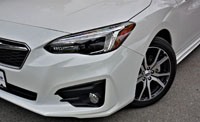
The model tested for this review was a 2019, and yes I’m quite aware that the 2020 Impreza is already available, and therefore this review won’t be helpful for very long. Still, consumers willing to opt for a 2019 Impreza can save up to $2,500 in additional incentives (at the time of writing), as seen right here on our 2019 Subaru Impreza Canada Prices page, while folks wanting the updated 2020 Impreza can only access up to $750 in additional incentives, unless of course they become CarCostCanada members and take advantage of dealer invoice pricing that can save them thousands.
For 2020, Subaru is making its EyeSight suite of advanced driver assistance systems standard with Imprezas featuring automatic transmissions, but take note that EyeSight is only available with this Sport trim and the top-line Sport-tech model for 2019. The car tested didn’t include the advanced features, which means that it was missing pre-collision braking, pre-collision brake assist, pre-collision throttle management, lane departure warning, lane sway warning, lane keep assist, lead vehicle start alert, and adaptive cruise control. Subaru is making its Starlink connected services package available for 2020 too, and it’s included with most Impreza trims, while the new model’s styling has been updated on 4- and 5-Door body styles.
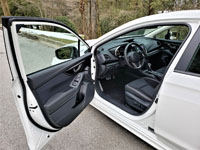
Nothing changes with respect to trim lines from 2019 to 2020, with the Impreza’s four trims remaining Convenience, Touring, Sport and Sport-tech. Model year 2019 4-Door pricing ranges from $19,995 to $30,195, whereas the 5-Door can be had from $20,895 to $31,095. The Impreza’s base price stays the same for 2020, but some pricing in between increases, with the new 5-Door adding $100 to its new $20,995 base price, and the top-line Sport-tech trim costing $30,795 for the 4-Door and $31,695 for the 5-Door.
The 2019 Impreza Sport 5-Door being reviewed here has a retail price of $25,395, but take note the new 2020 version will increase its price to $26,195. Like its two lesser siblings the Sport can be had with a five-speed manual transmission or an available Lineartronic CVT (continuously variable transmission) with standard steering wheel shift paddles, the latter how Subaru upgraded my test car. As usual, the brand’s Symmetrical AWD is standard equipment, which not only makes the Impreza the only car to feature standard AWD in the compact segment, but also one of the only vehicles in this class with available AWD period.
To clarify, Mazda recently showed up with AWD for its compact 3, while the latest Toyota Prius now can be had with an electrified e-AWD setup. VW will offer its Golf Alltrack crossover wagon until it sells out (sadly it’s been discontinued), but to be fair it’s more of a Crosstrek challenger as it is, while the brand’s Golf R competes directly with the Subaru WRX STI.
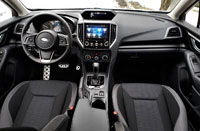
Volkswagen in mind, am I the only one to find it odd that this relatively small Japanese automaker has managed to keep the German brand’s horizontally opposed engine design relevant for all of these decades? Subaru has long made the boxer configuration its own, now sharing it only with Porsche and, occasionally, Ferrari, with its newest 2.0-litre, DOHC, 16-valve four producing a dependable 152 horsepower and 145 lb-ft of torque by means of direct injection, dual active valve control, and electronic throttle control. This is considerably more engine output than most rivals’ base engines, with in fact just three competitors make more power, and then not much more, plus just four putting out greater torque.
On the road, the Impreza performs strongly in a straight line, from a standing start all the way up to highway speeds. Its torquey engine works really well with the CVT that provides particularly smooth, linear power, while the paddle shifters are helpful when downshifting mid-corner. Still, the engine and transmission combination worked best when left on its own. Also smooth, Impreza’s ride is excellent, while its capability through the curves is typical of its fully independent front strut and rear double wishbone suspension layout, improved with stabilizer bars at each end.

The Impreza therefore offers up a more sophisticated suspension setup than a number of its peers that incorporate less expensive torsion bar designs in back, and this is truly noticeable when driving it hard through fast-paced corners on less than ideal stretches of pavement. Instead of experiencing the rear end hopping over the uneven tarmac, my tester’s 205/50R17 all-seasons remained planted on course, the little wagon making its rally race-bred heritage apparent through each and every turn.
This was when I looked down at my tester’s centre console and longed for the standard five-speed manual gearbox, as it would have been more fun to drive and likely quicker as well, but as it was the paddle shifters worked well when more revs were required, even though they come hooked up to a CVT. It worked well enough, actually, that I’d even consider choosing the CVT if this one was staying in my personal collection, not only because it’d make city driving easier, but also because the automatic is better on fuel, with an estimated rating of just 8.3 L/100km in the city, 6.4 on the highway and 7.5 combined, compared to 10.1 city, 7.5 highway and 8.9 combined for the manual.
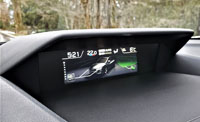
While a great car to drive, the Impreza is wonderfully comfortable too, and not only because of its smooth ride. The front seats provide very good adjustability, but oddly the driver’s seat doesn’t have any lumbar adjustment in Sport trim. The seat is inherently supportive, thankfully, and due to plenty of reach from the tilt and telescoping steering column it was easy for me to get myself into an ideal driving position for good control of the leather-clad steering wheel and metal sport pedals. The steering wheel’s rim is shaped perfectly for a comfortable feel, while all the switchgear needed to control its audio, phone, cruise, and trip/multi-information display systems are on its spokes.
Unlike the majority of challengers, the Impreza’s mostly analogue instrument cluster simply divides its primary dials with a coloured TFT display for speed, gear selection, real-time fuel economy, the fuel level, plus the odometer and trip mileage readouts. Alternatively, Subaru houses the full multi-information display in a hooded 4.2-inch colour monitor on top of the centre dash. It incorporates a lot of information, with its top half-inch portion showing a digital clock, interior temperature reading, climate control settings, and the outside temperature, while the larger lower section can be organized as per a driver’s preference, with the options being audio system info, real-time fuel economy and projected range, all-wheel drive power distribution, a row of three digital gauges including water temperature, oil temperature and average speed, plus more.
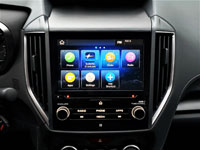
The multi-information display’s quality of graphics and display resolution has made big gains this generation, but Subaru’s most impressive upgrades in recent years have been made to over in-car infotainment, specifically the main touchscreen on the centre stack, plus and host of functions. Choosing Sport trim means the centre display increases in size from 6.3 to 8.0 inches, while it’s also an ultra high-quality touchscreen with clear definition, beautifully vibrant colours, and wonderfully rich contrasts. Subaru’s tile design is attractive, with big colourful “buttons” overtop a starry blue background that-style graphic layout looks good and is really easy to operate, with its main features being radio, media, phone, apps, settings, and the automaker’s Starlink suite of apps. Navigation isn’t part of Sport trim, but Android Auto and Apple CarPlay is, and by integrating your smartphone can provide route guidance. The apps panel features Aha and iHeartRadio, plus two USB ports and an auxiliary plug provide smartphone connectivity. The reverse camera is good too, benefiting from active guidelines.
All heating, ventilation and air conditioning controls are located on a dedicated interface just under the centre display, while single-zone automatic climate control comes standard with Sport. It operates via three dials and two buttons, but don’t look there for the two-way seat heaters that get controlled via a pair of rocker switches on the lower console. This said, even in their hottest settings they don’t feel anywhere near therapeutic.
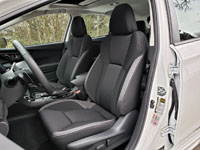
Subaru doesn’t provide a heatable steering wheel rim in Sport trim, which was a disappointment, but not as disappointing as not being able to get rear seat heaters in any trim at all. This is unusual for a car that would make an excellent family ski conveyance during the coldest season, but just the same the Impreza Sport 5-Door’s rear quarters were nicely furnished, although strangely without secondary air vents.
It’s plenty spacious in the rear passenger compartment, however, with about eight inches of room ahead of my knees when I sat behind the driver’s position that was set up for my five-foot-eight, short-torso, long-legged body type. I also had plenty of space to stretch my legs out with my feet below the front seat, while there was ample side-to-side either room along with a nice wide folding centre armrest with the usual two cupholders integrated within. Finally, I had approximately three inches of air space over my head, making the back seat a viable option for six-footers. The rear window seats also provide good lower back support, which I suppose makes it easier to look past the rear quarter’s lack of amenities.
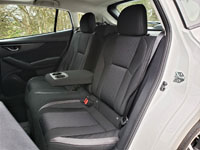
Speaking of the seats, my Sport trim tester’s cloth upholstery is mighty attractive, made up of a sharp looking patterned insert flanked by grey bolsters featuring contrast stitching. I have to say, every Impreza generation makes major strides in cabin refinement, with this most recent fifth-gen model a much more inviting place for driver and passengers with respect to materials quality and overall styling. One look at the contrast-stitched, leather-like pliable composite dash top and you’ll be impressed, this easily as good as this compact segment gets. The high-end surface treatment even flows down the right side of the centre stack and gets duplicated on the left section as well. It’s stunning.
The door uppers get a similarly soft synthetic covering whereas the armrests felt like real stitched leather. Subaru spruces things up further by adding carbon-fibre-like inlays, satin-silver/grey accents, chrome embellishment and more, while the interior buttons, knobs and switches are fitted tightly throughout the interior.
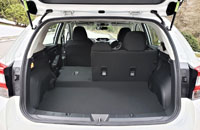
I’ve already spoken about the cargo compartment’s impressive capacity, with its average amount of space behind the rear seats and better-the-average volume when they’re flattened, but I wish Subaru had included a 40/20/40-split instead of the 60/40 divide, or at least a centre pass-through. I know owners in this class are used to squishing their rear passengers into the 60-percent portion when loading longer items like skis in back, but there’s a much more elegant way that Subaru should adopt in order to further differentiate itself from most compact rivals. The Impreza does include a retractable cargo cover for hiding valuables, and it’s housed within a well-made, good looking aluminum cross-member that’s easy to remove.
All in all, I could see myself owning an Impreza 5-Door at some point, if I ever choose to give up this career and am forced to purchase a new car. It’s an ideal size for me, provides enjoyable performance and agreeable comfort combined with good fuel economy, is rated highly from a reliability standpoint, and is much more refined than many in this class. I like that its infotainment system is now in the top 10-percent of this segment, and even though I would have appreciated some additional features in my Sport test model, I drove a top-tier Sport-tech version couple of years ago and found it even more appealing than this model. All things said, the Impreza is a car you should consider seriously.
Story credit: Trevor Hofmann
Photo credits: Karen Tuggay

